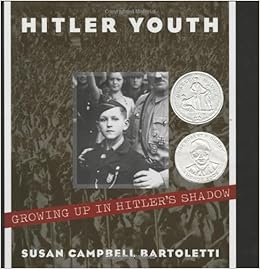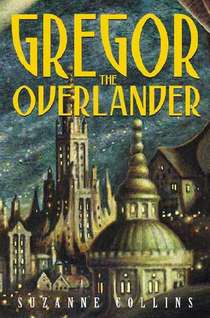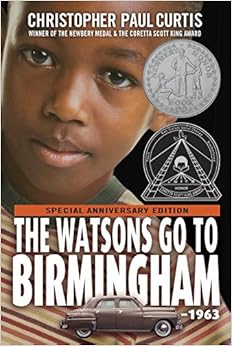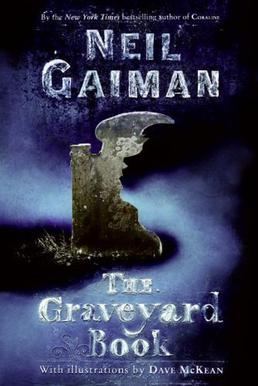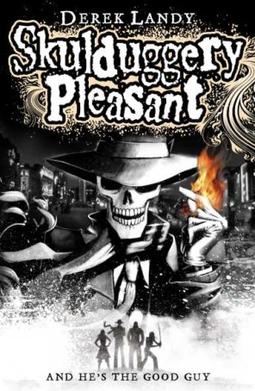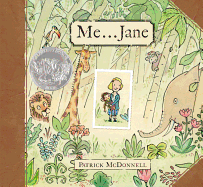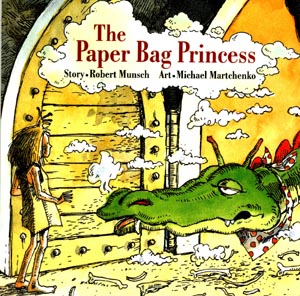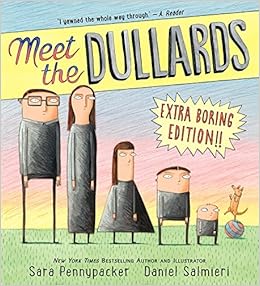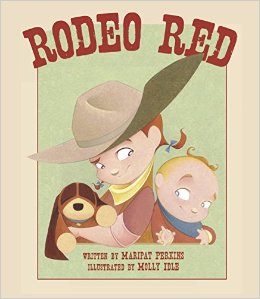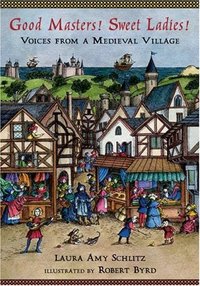Alexander, K. (2014). Crossover. New York: Houghton
Mifflin Harcourt.
Crossover
By: Kwame Alexander
Although the topic may be about basketball, the book is
written in poetic verse and tells the story of two young twin boys, Josh Bell
and Jordan Bell, and their love of basketball.
It also relates the story of their relationship with their father, Chuck
Bell, a former basketball player. The
novel is divided into six sections which contain a variety of poems full of
rhythm and verse. The title of the book,
Crossover, not only references a basketball move, but also becomes one of the
important themes of the book.
The style
of this contemporary novel is one written in verse. Although at first, the theme may seem only of
basketball, other themes such as the bond and love of a family, and following
the “rules” of life, come through. Kwame
Alexander’s style of writing in which he utilizes poetry, rhyme, and rap make
this novel interesting and unique.
Readers will enjoy identifying with its two main characters, Josh and
Jordan, two twelve-year old twins, who love the game of basketball thanks to
their dad. Even basketball
non-enthusiasts will find this verse novel appealing and enjoyable when reading
about the bond that a father and his two sons share through their love of the
game of basketball. Told mostly from one
of its characters (Josh Bell) point of view, readers will connect to the
story’s main theme of the use of the “Crossover” not only in basketball, but in
real life too.
Lesson Plans
Applegate, K. (2015). Crenshaw. New York: Feiwel &
Friends.
Crenshaw
By: Katherine Applegate
Who hasn’t had an
imaginary friend as a child? A young boy
deals with the problems facing his family (poverty, homelessness, father’s
debilitating illness) by creating an imaginary friend named Crenshaw. Crenshaw is not your ordinary imaginary
friend, either. He is a big, black and
white cat that seems to appear to Jackson whenever he is facing a difficult
time. Young readers will easily relate
to the main character and his solution to many of his problems.
Lesson Plans
One of the
resounding themes of this story is that of the power of love, not only the love
of a family, but the love of a friend (real or imaginary).
A beautifully and
simply written story by Katherine Applegate that is told through the eyes of
its main character, a young boy named Jackson.
Katherine Applegate’s style of writing makes this story easy to read and
able to be enjoyed by young readers everywhere.
Young readers will
easily relate to the problems that a young boy named Jackson has to face when
his family is forced into homelessness for the second time. Jackson, although trying to assume bravery
for his parents’ sake, seems to find solace with an imaginary friend (cat named
Crenshaw) who always appears when he needs him the most.
Bartoletti, S. (2005). Hitler Youth. NY: Scholastic.
Hitler Youth
By: Susan Campbell
Bartoletti
Although the topics of the Holocaust and Nazism may be
difficult to talk about, Susan Bartoletti’s explanation of the creation of the
Hitler Youth offers an interesting look and insight into the German culture
during Hitler’s reign. Written in an
objective and non-judgmental format, Hitler Youth answers many of the questions
as to why so many youths were so enthralled with the idea of belonging to
it. This story offers a look into the
historical background of a group of young German citizens’ involvement with a
youth group developed by Adolf Hitler.
ACCURRACY: The author steers away from judgement or
criticism, and instead provides an objective perspective into the history of
the group of young people known as the Hitler Youth. Susan Campbell Bartolleti provides an
extensive bibliography to cite her sources.
ORGANIZATION: The book is well organized and the captions
next each photograph provide information that supports the subject matter.
Bell, C. (2014). El deafo. New York: Abrams.
El Deafo
By: Cece Bell
A humorously written graphic
novel about the author’s childhood life and some of her experiences growing up
as a deaf child. Dealing with everyday
situations that a young child has to deal with is hard enough, but add to that
being a deaf child in a regular school setting, and things get even more
complicated and difficult. Cece Bell’s
blend of humor and child-like dialogue will make this novel a favorite among
young adults.
Lesson
Plan:
El Deafo-The graphic novel style would probably be an
instant “first
attraction” for many
students. Although the story is about a
child
with a disability (deafness),
the themes of wanting to belong and
being accepted are
universal. The character, Cece, learns
to deal
with a difficult situation
through humor and lots of learning
experiences which any young adult can
relate to. What child has not dealt with
the trials of growing up?
Bishop, N. (2007).Spiders. NY: Scholastic.
Spiders
By: Nic Bishop
This colorful and carefully photographed picture book of
spiders will attract immediate attention. Nic Bishop’s look into the working world of
spiders is uncanny. The photographs are
so life-like that the young reader will practically feel the spider’s hairy
legs. Such attention to detail and facts will make spiders an instant
attraction to many young readers.
Photographed while making webs, eating, and moving about, the spiders
seem to come alive before your very eyes.
ACCURACY: The author, Nic Bishop, has a doctorate in
biological sciences. His fascination
with the subject matter has lead him to
research extensively spiders for this book.
He traveled in search of different spiders, spent hours photographing
them, and even raised them in his
home.
DESIGN: The subject matter was presented in a manner
that would appeal to all children. The
photographs illustrate the parts of the spider very well.
STYLE: Nic Bishop’s passion about his subject matter
is evident with every photograph. The
style in which he writes and photographs his subject matter encourages the
reader’s curiosity.
Bragg, G. (2011). How they croaked: The awful ends of the
awfully famous.NY: Walker.
How They Croaked: The
Awful Ends of the Awfully Famous
By: Georgia Bragg
Ever wondered how George
Washington, Cleopatra, Henry VIII, and some other very famous individuals
died? Well, this book will explain how,
gory details and all! Not for the faint
of stomach, but for all the curious and history hounds out there. Young readers will love the vivid
descriptions and humorous writing used to describe the demise of some of the
most famous people in history. Kevin
O’Malley’s simple, yet funny drawings will add to the appeal.
ACCURACCY: Although quite descriptive and vivid, the
stories are historically accurate and the sources are noted in a
bibliography.
ORGANIZATION: The stories are organized into short chapters
with facts given at the beginning of every chapter. A table of contexts provides easy access.
DESIGN: The design of the illustrations and text helps present the
subject matter in a clear and interesting manner.
Brown, P. (2014). My teacher is a monster. NY: Little Brown
Books for Young Readers.
My Teacher Is a Monster!
By: Peter Brown
Perhaps, the
secret thought of lots of young children, this delightful and amusing book
finally answers the question, “What is my teacher like outside of school?” Bobby believes his teacher is a horrible
monster, but when he accidently runs into her one day in the park, he discovers
that his teacher may actually not be as bad as he thinks. This story inspires great hope that teachers
are not really monsters, but just greatly misunderstood.
The use of the visual element of texture by using watercolors, gouache,
and pencil and paper for the illustrations, and then digitally compositing and
coloring them make the characters development more interesting.
The personalities of the two main characters are very interesting and
develop throughout the story. The
characters are presented in a way in which any student or teacher could relate
to.
Cleary, B. (1983). Dear Mr. Henshaw. NY: Morrow.
Dear Mr. Henshaw
By: Beverly Cleary
Young readers are sure to identify with the main character
of this story. Through the letters that
Leigh, a young ten-year old boy writes to his favorite author, Boyd Henshaw,
readers will discover Leigh’s relationship with his divorced parents, being the
new kid in a school, and his dilemma of trying to find a place to belong
in. Leigh’s diary entries also reveal his
secret thoughts and wishes. Sure to become another classic and favorite among
Beverly Cleary’s fans.
Leigh
Botts, a ten-year old boy, has to deal with his parents’ divorce, his father’s
absence, and being the new kid in school.
He learns to work through his many problems and grows through his
“conversations” (letter writing) with his favorite author, Mr. Henshaw, and
also through his diary. Children of
divorced parents will identify easily with this character’s emotional journey
and growth. The themes of divorce,
loneliness, and wanting to feel a “sense of belonging” will ring true to young
readers. Beverly Cleary’s style of writing, which blends a sense of humor and
honesty, tackles the serious subjects of single-parent families and the
depiction of a young boy dealing with emotional issues.
Collins, S. (2004). Gregor the Overlander. NY:
Scholastic.
Gregor the Overlander
By: Suzanne Collins
Discover a world
where giant spiders, rats, and bats, live among strange looking humans. This is the mysterious world that Gregor, an
eleven year-old boy living in New York City discovers one day when he falls
through a hole in the laundry room of his apartment building, along with his
baby sister. Little did he know that his unexpected visit to the Underland
would change his life and the lives of his family as well. Young readers will be clamoring for a sequel
as soon as they finish reading this fictional novel.
The main
character, Gregor, an eleven year-old boy, is such a memorable character that
the reader will at times forget that he/she is reading a fantasy story. Gregor, who must behave older than his age in
order to take care of his family, undertakes a great adventure in order to save
his little sister, and unknown to him, a whole underground civilization.
Although the genre
is fantasy, the story’s plot of trying to save a loved one and believing in the
love of your family will ring true to young readers.
The setting, the
Underland, is pivotal to the plot of the story.
Vividly and descriptively written by Suzanne Collins, the reader is
engaged from the very beginning, when Gregor and his sister fall into the dark
and mysterious Underland world.
Creech, S. (2001). Love that dog. NY: HarperCollins.
Love That Dog
By: Sharon Creech
Told through journal entries of
the main character, Jack, and the responses he receives from his teacher,
readers learn about Jack’s reluctance to not only write poetry, but more
importantly to express his feelings.
Through his exposure to poetry by his teacher, Jack learns to deal with
the death of his beloved dog, Sky.
Simply, yet effectively written by Sharon Creech, this novel deals with
many themes, most predominantly, the themes of love and dealing with the death
of a much loved pet.
Love That Dog-Although the theme of love and loss is a difficult
one, readers
will
easily relate to the young characters situation. The story unfolds
through the journal writings of a young boy named Jack. Readers will
enjoy
the communication between Jack and his teacher.
The poetry
within the story can be easily read and is quite relatable to young
adults
dealing with a difficult situation. The
characters growth
throughout the story through his discovery of poetry keeps the reader
engaged.
Curtis, C. P. (1995). The Watsons go to Birmingham, 1963. NY:
Delacorte.
The Watsons Go to Birmingham
By: Christopher Paul Curtis
With Kenny, a ten
year-old African-American boy growing up in the south during the conflicting
1960’s, as the narrator of this story, the reader gets to know his family, the
“Weird Watsons”. Although written with humor
and a child-like innocence, this novel is set against the violent times in
Birmingham, Alabama during 1963. The
central theme of the power of the love of a family is what will keep the
readers interested in the development of the main character and the other
family members.
Ten-year
old Kenny Watson and his family, Momma, Dad, little sister Joetta, and older
brother, Byron (The Weird Watsons), are witnesses to a tragic and important
historical event in Birmingham, Alabama.
Set in 1963, during the Civil Rights Movement, the Watsons, experience
some of the violence and hatred that faced African-Americans at this time. The Watsons embark on a journey from Flint,
Michigan to Birmingham, Alabama to visit their grandmother and teach the oldest
son, Byron, a lesson. Told from the point of view of Kenny, the story’s themes
of acceptance, friendship, and the bond and love of a family, are beautifully
intertwined within the story. The
dialogue and relationships between the characters in the story, although mostly
humorously written by Christopher Paul Curtis, convey the feelings and
sentiments experienced by many African-American families at this historical and
pivotal time in American history. Young
readers are able to view one of America’s saddest events, the bombing of a
church in Birmingham and the death of four young girls, through the young eyes
of Kenny, who must learn to deal with the confusion and feelings he experiences
after this event. Young readers will be
able to relate with his struggle for understanding and acceptance of a changing
world.
Deedy, C. A. (2007). Martina the beautiful cockroach.
Atlanta, GA: Peachtree.
Martina the Beautiful Cockroach
By: Carmen Agra Deedy
A Cuban folktale retold by Carmen Agra Deedy. Martina, the beautiful cockroach is looking
for a husband. She decides to listen to
her wise Cuban grandmother’s (Abuela) advice and use the, “Coffee Test”. Full of beautiful illustrations and descriptive
language, this Cuban folktale is timeless and teaches a valuable lesson. The Spanish words written in the text make
this story colorful and entertaining.
The use of vibrant
colors to portray the qualities of each character make them quite memorable to
the reader.
The text contains
several Spanish words and describes some of the traditions representative of
the Cuban culture. It is entertaining
without being insulting or degrading.
dePaola, T. (1983). The legend of the bluebonnet. NY:
Putnam.
The Legend of the Bluebonnet
By: Tomie De Paola
A beautifully written and illustrated tale of how the Texas
bluebonnet came to be. This tale tells
the story of a young girl named, “She-Who-Is-Alone” and her unselfish sacrifice
of her most beloved treasure in order to save her people. Tomie de Paola’s blending of colorful illustrations
and vivid retelling of this tale make this story come alive.
Lesson Plan
The use of the
visual element of the lines within the illustrations help the reader visualize
important parts of the story such as the main character’s memories of her
deceased family members. (Shadows drawn with flowing and fading lines.)
The theme of
“sacrifice” in order to save loved ones is one of several poignant themes
represented in this story.
Falconer, I. (2009). Olivia. NY: Atheneum.
Olivia
By: Ian Falconer
Although simply written and illustrated, this story features
a unique and interesting main character named Olivia. Olivia’s unique personality is emphasized by
the only colored illustrations that feature her adventures. Olivia enjoys being herself and is loved by
her mother for being just that. A
wonderful story that celebrates the idea that being different is what makes us
special.
Olivia is the
only character that is drawn with any color which portrays her desire to be
unique or different.
Olivia is a
unique character with her own distinctive personality. Many children could identify with her desire
to “stand-out” or be different.
Gaiman, N. (2008). The graveyard book. NY: HarperCollins.
The Graveyard Book
By: Neil Gaiman
The story of a young boy named, Nobody, whose family is
killed by a man named Jack when he is only 18 months old. Nobody is saved from the killer and adopted
by an ancient dead couple buried in the cemetery which he wanders into as a
baby. Protected from the world of the
living, he grows up in the cemetery and meets a young girl named Scarlett when
she visits the cemetery one day.
Although he tries to go back to the world of the living when he is
older, he gets in trouble at school and decides to go back to the
cemetery. Eventually, he must go out
into the world of the living again.
The setting is
crucial to the plot of this story. The
graveyard becomes the home of an orphaned little boy named Nobody Owens, who is
raised by a pair of ghosts. Nobody Owens
spends most of his childhood in this graveyard learning from the ghosts and
creatures that reside there.
Norman Gaiman’s
story of a young boy’s adventures in a graveyard is written in such a
descriptive and enthralling style that young readers will find this story quite
entertaining. Although the genre is
fantasy, the manner in which the author writes about the boy’s relationships
with the other characters in the story, makes the story more relatable to
readers.
Gino, A. (2015). George. New York: Scholastic.
George
By: Alex Gino
Although a
fictional story, George deals with the very real topic of being
transgender. Meet George/Melissa, a
young girl who feels trapped in the body of a boy. Throughout the story, George faces many
obstacles in her search for her true identity and for acceptance. She becomes friends with a young girl named
Kelly whom she first trusts with her secret.
Fearing rejection from other young adults, and especially her mother,
George must discover a way to come to terms with her situation and with
divulging her true thoughts and feelings about who she really is.
Written
from the point of view of its main character, George, this story deals with the
difficult and misunderstood topic of transgender individuals. George, a young boy in the fourth grade, has
always secretly felt as if he should have been born a girl. Through his journey of self-discovery, George
must deal with the sense of being true to yourself, but finding it difficult
when the “normal” gender stereotypes are hard to break. Alex Gino has written a character with
insecurities and a need to find his true identity within his family, friends,
and society. The plot is original and
unravels as the character begins his journey to being honest and true to
himself, his family, and friends.
Giovanni, N. (2005). Rosa. NY: Holt.
Rosa
By: Nikki Giovanni
Filled with bold
vivid illustrations, this book tells the story of a remarkable woman named Rosa
Parks. It relates the events of that now
famous bus ride by Mrs. Parks on December 1, 1955. Young readers will be inspired by her courage
and strength during a time in American history filled with racism and
segregation towards African-Americans.
An educational book about a difficult, but important topic for all
people, young and old.
STYLE: Nikki Giovanni’s poetic style is unmistakable
with such lines as, “They decided they would stand under the umbrella of
courage Rosa Parks had offered, keeping off the rains of fear and self-disgust.
DESIGN: The illustrations by Bryan Collier are
bright, colorful, and convey the feelings of the moment. The book has are artful appearance as the
illustrations seem like paintings.
Hale,
S., Hale, D. (2008). Rapunzel's revenge. N.Y.: Bloomsbury.
Rapunzel’s Revenge
By: Shannon Hale and Dean Hale
Not your ordinary
Rapunzel story. Set in the Wild West, a young
heroine, Rapunzel, sets about on interesting adventures with a young man named
Jack, whom she meets unexpectedly. Young
readers will instantly be drawn to the graphic novel style of the story and the
action-packed story line. Definitely,
not your everyday fairy tale, but a great read, none the less.
Written with twist by Shannon and Dean Hale, the classic story,
Rapunzel, is humorously written in a cartoon version. The authors’ style of
writing brings to life this classic fairy tale that will be enjoyed by young
readers.
The theme of “good versus evil” quite prevalent in this
story. Rapunzel’s quest to right the
wrong done to her and her family gets the reader involved in the heroine’s
journey
Harris, R. H., & Emberley, M. (2014). It's perfectly normal: A book about
changing bodies, growing up, sex and sexual health. Boston,
MA: Candlewick Press.
It’s Perfectly Normal
By: Robie H. Harris and Michael Emberley
Although it deals
with topics that many adults and children have difficulty talking about, this
books is an excellent resource for any health class, counseling office,
library, or curious young adult. It is
an honest and factual book about the many changes the bodies of adolescent boys
and girls go through. A perfect tool for
any parent wishing to have an open and honest discussion with their child about
puberty and the female and male body.
ACCURRACY: Professional resources are noted and
thanked. The facts are clearly stated
and differentiated from theory.
ORGANIZATION: The organization and layout provides the
reader an opportunity to choose the information needed. The reference aids included are useful due to
the complicated subject matter.
DESIGN: The illustrations and text communicate the
subject matter in a clear and informative manner
Holm, J. L., Holm, M., Krosoczka, J., Pilkey,
D., Santat, D., Telgemeier, R., Yang, G. L. (2014). Comics Squad: Recess! NY:
Random House.
Comics Squad: Recess!
Want a good
laugh? Then you’ve come to the right
book! This comical graphic novel
contains a collection of some of the funniest stories for children (and maybe
even adults) by some of the funniest children’s authors, such as Dav Pilkey,
Gene Luen Yang, Jarrett J. Krosoczka, among several others. The graphics only
add to the humorous situations of each story.
Sure to be a favorite among young readers and the young at heart.
The main
character, Daryl, in the story, “The Super-Secret Ninja Club” by Gene Luen
Yang, is one that many young readers can relate to. His efforts to “fit in” and have a sense of
“belonging to a group” is something that many young readers can associate with.
Many young readers
will easily recognize and enjoy Dave Pilkey’s style of writing in the story,
“Book’Em, Dog Man!”. His simple, but
humoristic style of writing has been enjoyed by young fans for many years.
Jeffers, O. (2014). Once upon an alphabet. New York:
Philomel Books.
Once Upon an Alphabet
By: Oliver Jeffers
There are twenty-six stories that illustrate every letter of
the alphabet. The stories are short, but
entertaining. Every letter of the
alphabet is represented by a new character or event. All the stories from A to Z are simply, but
effectively illustrated and the pictures make each story memorable. You can read it from beginning to end, or
just pick a letter and the story to go with it.
The creative use
of the visual element of the lines in the illustrations provide the reader with
the feeling of movement and action throughout the book.
The illustrations
provide the visual representations necessary for the small stories of each of
the letters of the alphabet.
Klassen, J. (2012). This is not my hat. Boston, MA:
Candlewick.
This Is Not My Hat
By: Jon Klassen
A simply written and illustrated picture book, it tells the
story of a little fish that decides to steal a hat from a big fish. The little fish thinks he will get away with
it, or will he? This is the premise of
the book that keeps the reader hooked until the very end. The illustrations add a sense of mystery and
suspense to the storyline and makes this book fun to read.
All the visual elements (line, shape, color, and texture) come together
in the composition of these illustrations and enhance the mood, feeling of
movement, and plot of the story.
The plot of this story may be simple, but it keeps the reader engaged
until the final outcome of the story is revealed.
Landry, D. (2007). Skulduggery pleasant NY: HarperCollins.
Skulduggery Pleasant
By: Derek Landy
Full of mystery and suspense, young readers will find this
fantasy story about an old wise-cracking skeleton named Skulduggery Pleasant
humorous and entertaining. Stephanie, a
twelve year-old girl dealing with the death of her uncle, meets Skulduggery
Pleasant, a dead detective and her uncle’s best friend. Together they embark on
an adventurous journey trying to solve several mysteries while trying to keep
Stephanie alive. Readers will especially enjoy the humorous dialogue between
the two main characters, Skulduggery Pleasant and Stephanie.
Written in a
mystery style by author Derek Landy, this story is full of suspenseful and
tense moments. Readers are taken on an
adventure along with its two main characters in order to solve the
mystery.
Its’ two main
characters, a young girl named, Stephanie, and a skeleton detective named,
Skulduggery Pleasant are the story’s central attraction. These characters are adventurous and like to
seek answers. Young readers will enjoy
these characters very much.
McDonnell, P. (2011). Me…jane. NY: Little, Brown Books
for Young Readers.
Me…Jane
By: Patrick McDonnell
A simply written
and illustrated picture book about the childhood of famed primatologist, Jane
Goodall. Young readers will be inspired by the dreams and goals of a little
girl who loved to read about amazing animals from Africa. Her desire to help wild creatures led to her
studies of the chimpanzees. The
child-like drawings and easy readability make this book a wonderful addition to
any library or classroom.
ORGANIZATION: The progression and sequence of the story
about Dr. Jane Goodall’s life is written simply and clearly
(childhood-adulthood).
DESIGN: The cartoon-like illustrations in this book
complement the text very well. It is
simply written, yet conveys the subject matter in an interesting and clear
manner.
STYLE: Patrick McDonnell’s style is simple, yet
clear and interesting. The book is a
Caldecott Honor Book award winner.
Munsch, R. (2012). The paperbag princess. NY: Annick
Press.
The Paper Bag Princess
By: Robert Munsch
An old favorite, “The Paper Bag Princess”, is still enjoyed and
read by many. The main character,
Elizabeth, the princess, is a strong, independent and feisty young woman who
sets out to rescue her prince. Although
not the usual fairy tale, where the princess is rescued by the prince, it has
many great lessons. It is a story that
inspires courage, strength, and the acceptance of being unique.
The variation
between the colors of the characters’ clothes from the beginning of the story
and then throughout the rest of it, represent a lot of symbolism derived from
the theme of the story.
The message from
one of the themes of this story is one that every person should learn: “Don’t judge a book (person) by its’ cover.
Nelson, K. (2008). We are the ship NY: Hyperion.
We Are the Ship
By: Kadir Nelson
Readers will
immediately be drawn to the beautiful paintings found throughout this
book. This is the story of the Negro
League baseball and many of its well-known players. The stories of how many of these heroes
overcame many of the obstacles set for colored players since the 1920’s such as
racism, hatred and unequal pay, is what makes this book a real gem for baseball
fans and for history buffs as well. It
is a wonderful blend of priceless paintings and truthful writing by author and
painter Kadir Nelson.
DESIGN: The pictures in this book seem more like
paintings that should be hanging on a museum wall. The pictures of the players in this book seem
to bring them to life.
STYLE: The author’s (Kadir Nelson) passion for the
subject matter (Negro League Baseball) comes through in the text of this
story. The vivid descriptions help
relate his enthusiasm for the subject.
Ottaviani, J. (2013). Primates. NY: FirstSecond.
Primates
By: Jim Ottaviani
The story of three remarkable
female scientists, Jane Goodall, Dian Fossey, and Birute Galdikas. The author does a wonderful job flowing the
life story of one into the other. Jane
Goodall’s fascination with chimpanzees, Dian Fossey’s interest in gorillas, and
Birute Galdikas interest in orangutans are beautifully told and visually
depicted in this nonfiction book. All
three are united by their relationship and sponsoring of Louis Leaky, famed
paleontologist. The inspiring stories of
the lives of these three great women is not only interesting, but important for
all young readers to know.
ORGANIZATION: The information is provided in a logical and
easy manner. The illustrations have a
sequential feel of events.
DESIGN: The story is presented in a visual and
simplistic type of text in order to inform the reader. The illustrations are presented in a type of
“cartoon” version that would appeal to a young audience.
Paterson, K. (1972). Bridge to Terabithia. NY: Crown.
Bridge to Terabithia
By: Katherine
Paterson
An unlikely friendship that leads to the creation of a new
and mysterious world, Terabithia. When
the main character, Jess, first meets Leslie it seems as though the two have
nothing in common. As their friendship
develops, so does Jess’s admiration for Leslie’s imaginative abilities. A terrible tragedy allows Jess to understand
the value of true friendship while discovering an appreciation of Leslie’s
bravery.
The back
woods of a small town named Lark Creek is the perfect setting for the imaginary
“secret kingdom” named Terabithia by two young characters named, Jess and
Leslie. This setting is crucial for the
plot of the story as it unfolds towards the climax and conclusion. Katherine Paterson’s descriptive style of
writing helps the reader visualize this “imaginary kingdom”. Her use of figurative language in her writing
such as, “Mad as flies in a fruit jar…” and “They would follow him around like
a country music star,” give the characters a sense of realism. Perhaps, most importantly to the storyline,
are the characters themselves. Jess, a
young boy willing to take orders from a strong-willed, independent, and
imaginative little girl named, Leslie.
Not following the usual gender role depictions, Katherine Paterson,
gives readers a lead female character that is interesting and unforgettable.
Trailer
Pennypacker, S. (2015). Meet the Dullards. New York:
Balzer + Bray.
Meet the Dullards
By: Sara Pennypacker
The illustrations
in this picture book emphasize the topic of the story which is that Mr. and
Mrs. Dullard (the parents) want nothing more than a boring and simple life for
their children, who want exactly the opposite.
The Dullards move from one town to the next looking for a place that
will not offer any excitement, thrills, or adventures for their children. Unbeknownst to them, their children, are
always searching for the opposite. A
cute, funny and colorful picture book.
The contrasting
use of the dull and plain colors with the bright ones used for the illustrations
from the view out of the window enhance the storyline.
The setting is a crucial element of the plot, since the Dullards are always looking for a “dull” place.
The setting is a crucial element of the plot, since the Dullards are always looking for a “dull” place.
Perkins, M. (2015). Rodeo Red. New York: Peachtree
Publishers.
Rodeo Red
By: Maripat Perkins
A delightful and
amusing story for any child who has had to learn to live with a little brother
or sister. The main character, a little
girl named Rodeo Red, must figure out how to rescue her stuffed animal, Rusty, from
her little baby brother. Written with
cowboy style language, Rodeo Red describes her adventures with “Sideswiping
Slim” (her brother) and how difficult her life has become since his
arrival. Colorful and descriptive
pictures help illustrate this story.
The composition
element is evident in this book as all the visual elements such as line, shape,
and color come together to emphasize the dillema in the story.
The illustrations
complement the story quite well. The
illustrations extend the meaning of the text and provide crucial details that
assist in the storytelling.
Schlitz, L. A. (2007). Good masters! Sweet ladies! Boston,
MA: CandlewickPress.
Good Master! Sweet Ladies!
By: Laura Amy Shlitz
Set in the 1200’s,
readers will enjoy reading the stories written in the form of monologues of
several young people that lived near a fictional manor, and whose lives are
connected through their circumstance in life and with the proximity of their
living arrangements. The monologues
offer an insight as to the types of jobs and duties their daily lives required
while also providing a look into the medieval lives of that time. There are six sections titled, “A Little
Background” that offer facts about different topics such as, the Crusades,
falconry, and several others.
Written
in the form of nineteen monologues and two dialogues, it tells the stories of
children (ages ten to 15 years old) that lived during Medieval times during the
thirteenth century. The characters range
from the children of peasants, to royalty, doctors, and knights. The monologues provide useful insights into
the daily living conditions and occupations needed to survive during the Middle
Ages. The characters are connected to
each other in various ways, but are also separated by their station in society,
or by their wealth. Although readers may
not be too familiar with the history of this time, the characters voices’ that
relate the themes of the distinction between wealth and poverty, social
acceptance, religion, and the essence of beauty, are still found today. The setting is an integral part of the
monologues because they all live in or near a fictional English manor. Six sections within the book titled, “A
Little Background” provide the reader historical facts about such topics as,
the relationship between Christians and Jews, the Crusades, Falconry, and other
historical subjects. Young readers will
find Laura Amy Schlitz’s ability to blend historical fiction and drama
interesting and informational.
Schmidt, G. (2015). Orbiting Jupiter. New York: Clarion
Books.
Orbiting Jupiter
By: Gary D. Schmidt
How powerful can the need for family and a sense of
belonging be? The answer will be
surprising. The parents of a young boy,
Jack, decide to become foster parents to another young boy, Joseph, with a
troubled past. Joseph, although only a
young teenager, is the father of a little baby girl named Jupiter whom he has
never met. Joseph’s need to find his
little girl, and Jack’s desire to help him, proves challenging for each one and
for Jack’s family. A heartbreaking story
that will grip the reader’s attention from the very beginning till the very
end.
Child abuse, death, and teenage parenthood are some of
the difficult themes entwined in this beautifully written contemporary
realistic novel. Written from the point
of view of one of its main characters, Jack, a young 12-year old boy, it deals
with the emotional journey of another young boy named, Joseph, who is placed in
the foster home of Jack’s parents at the age of 14. Joseph must learn to deal with such difficult
challenges as, being a father at such a young age, and being placed in a
juvenile prison named Stone Mountain.
Jack must also deal with a sense of loyalty to his foster brother and
with the need to understand Joseph and his harsh past. Gary Schmidt has written
a story with a plot so challenging and with such an unexpected conclusion, that
it will keep readers enthralled till the very end. The characters are written with such honesty
true to their age that many young readers will easily identify with them.
Selznick, B. (2007). Wonderstruck. NY: Scholastic.
Wonderstruck
By: Brian Selznick
It’s like reading two books at
the same time. Two stories told simultaneously,
one through print and the other through visuals. The stories of the two main characters, Ben
and Rose, are carefully and interestingly interwoven throughout the story
through the span of a difference of fifty years, one set in the 1920’s, and the
other in the 1970’s. Brian Selznick’s
novel is both unique and engaging. Young
readers will be enthralled till the surprising end where the two stories come
together as one.
Wonderstruck-Interesting,
unique, and suspenseful. This story
“hooks” the
reader from the very beginning and
is full of surprises till the very
end.
The illustrations are powerful and engaging. The characters are involved in difficult situations and prevail
despite their disability. The two stories are like a mystery waiting to be
solved by the reader.
Sendak, M. (1963). Where the wild things are. NY:
HarperCollins.
Where the Wild Things Are
By: Maurice Sendak
The illustrations in this Caldecott Medal winner help tell
the story of a little boy that gets in trouble and lets his imagination soar to
where the “wild things” live. Max gets
into mischief and is sent to his room by his mother as a punishment. So begins his adventure as the king of the
“wild things”, until he gets homesick and decides to head home. A wonderfully written and illustrated story
by Maurice Sendak.
The use of the
visual element of the lines of the illustrations seem to make the creatures
come alive and look as if they are moving.
There is a
sequence of events that leads to a resolution at the end of the plot.
Singer, M. (2010). Mirror, Mirror. NY: Dutton.
Mirror, Mirror
By: Marilyn Singer
This book of poems is written with a different twist of
classic fairy tales. The poems tell the
two sides of the main characters of favorite fairy tales such as, Cinderella,
Sleeping Beauty, Rapunzel, and many others.
Written in reversible verse and illustrated in vibrant colors, this book
of poems is fun to read and share with others.
It is definitely a new way of reading old classic fairy tales.
All the visual
elements are combined in the composition of the illustrations. They exemplify the type of poetry written by
Marilyn Singer.
The style of
poetry called “reverso” by the author makes this book interesting and fun to
read.
Smith, L. (2011). It’s a book. NY: Roaring Brook
It’s a Book
By: Lane Smith
A funny and witty book with three simple characters whose
dialogue keeps the story moving along. A
big monkey tries to convince a jackass that a book is just a book. The jackass asks questions like, “How do you
scroll down?” and “Where’s your mouse?” because he thinks it is some sort of
technological device which makes the reader think he has never seen a book
before. A humorous take on today’s use
of technology and the lack of reading from an actual book.
The use of the
visual elements of shape and size help emphasize the difference between the two
main characters. The simple shape of the
picture of the book also adds to meaning of the line, “It’s a book.”
Lane Smith’s illustration
styles have won him several awards such as the Caldecott Honor Medal. Although the style of the illustrations of
this book may seem simple, it collaborates the main idea of the story, “It’s
just a book.”
Sweet, M. (2011). Balloons over Broadway: The true story of
the puppeteer of Macy's parade. NY: Houghton
Balloons Over
Broadway: The True Story of the
Puppeteer of Macy’s Parade
By: Melissa Sweet
Children have
always loved balloons and puppets. The
mixed styles of illustrations and the descriptive writing of Melissa Sweet
detail the life of Macy’s first master puppeteer, Tony Sarg. Readers will learn of Tony Sarg’s
creativeness and love of movement through the creation of his early puppets to
the great big balloons of the famous Macy’s parade. An interesting and educational look into the
life of the man that made Macy’s parade an American staple of our Thanksgiving
celebration.
ACCURACY: The sources
for this book are cited in the bibliography and notes. Some of the illustrations were from a book
written by the subject, Tony Sarg.
ORGANIZATION: The organization of the book makes the understanding of the subject
matter easier to read, such as the use of sketches and subtitles.
DESIGN: The illustrations connect with the text in a manner that helps
move the story along. The design of the
illustrations complement the subject matter because of the attention to detail.
Wiesner, D. (2001). The three pigs. NY: Clarion.
The Three Pigs
By: David Wiesner
Told from the point of view of the three pigs, this funny
and imaginatively illustrated story provides a new version of an old
favorite. An excellent blending of
different stories and detailed illustrations in the creation of an amusing and
entertaining new tale. The illustrations
and clever writing keeps the reader engaged till the very end.
David Wiesner’s
use of texture combines print with a realistic quality in his illustrations of
this story. The characters seem to “jump
out” of the page towards you.
The illustrations
convey a feeling of action that unfolds with each of the characters’
adventure. The reader can imagine the
characters turning into real animals and living outside of the story within the
story.
Willems, M. (2013). A big guy took my ball! NY: Hyperion
A Big Guy Took My Ball!
By: Mo Willems
A simply written,
but quite enjoyable book. Young children
will love the colorful illustrations and simple dialogue. The main characters are an elephant named,
Gerald, and his little pig friend.
Piggie’s ball is taken away by a big whale, who turns out to be not such
a bad guy after all. One of several
books in the Elephant and Piggie series that always seem to teach a lesson.
Woodson, J. (2014). Brown girl dreaming. New York:
Penguin
Brown Girl Dreaming
By: Jaqueline Woodson
A memoir set in verse, this novel is like a historic look
back at the turbulent times of the 1960’s and 70’s. Told through the eyes of Jackie, a young
black child, the dialogue is both powerful and honest. Jaqueline Woodson’s love of stories comes
through in this memoir of her childhood written in poetic verse. The rhythm of the words and her vivid
description of life in the south, will make the reader feel as though they
themselves are finding their own voice along with Jackie.
Brown Girl Dreaming-The story of the life of the author,
Jaqueline Woodson,
beautifully told through poetry.
The poems are short, but quite
descriptive. The themes of
finding your voice through the written word,
and searching for your place in this world are central to the telling of
the
story, as is the deep love of a family, and being proud of who you are.
Whether growing up in the 1960’s, 70’s or now, there is always a need of
knowing who you are and where you came from which the reader will be
able to relate to.


